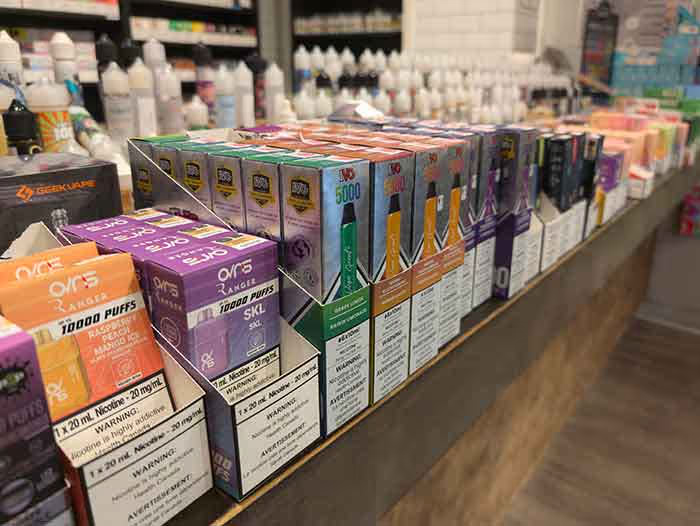
Published on
May 16, 2025
Written by
Isabella KusnerVisa dispute monitoring program and visa fraud monitoring program
If you’re a high risk business, you may likely end up under either VDMP or VFMP. Entering in these programs indicates that a business needs an immediate plan to reduce their disputes or fraud.
High-Risk Industries

Credit card names keep track of high risk merchants to encourage them to reduce their chargebacks. High risk businesses are those that incur more chargebacks than the average merchant. These chargebacks can be caused by different reasons, such as fraud or miscommunication.
Visa uses two programs to oversee businesses with high chargeback rates: the Visa Dispute Monitoring Program (VDMP) and the Visa Fraud Monitoring Program (VFMP). The primary difference between the two programs is that VFMP only accounts for fraudulent transactions while VDMP accounts for all disputes.
If you’re a high risk business, you may likely end up under either VDMP or VFMP. Entering in these programs indicates that a business needs an immediate plan to reduce their disputes or fraud.
What is the Visa Dispute Monitoring Program?
The Visa Dispute Monitoring Program (VDMP) is for businesses with a high dispute-to-transaction ratio. Disputes can result from fraud, authorization issues, technical issues, and more.
Customers file disputes with their issuing bank which then comes back to the merchant. The merchant has a timeframe to resolve the issue and present their case before the dispute turns into a chargeback.
Visa requires businesses in VDMP to work with their merchant bank in lowering their dispute-to-transaction ratio.
VDMP Thresholds
Visa uses three levels to identify how long enrolled businesses have to reduce their dispute rate. Early warning, standard, and excessive are consecutive stages that VDMP business can be filed under. The number of disputed transactions and threshold rate are taken into account.
Early Warning
The early warning threshold is a 0.65% dispute-to-transaction ratio and at least 75 disputes. At this stage, businesses are not officially in the VDMP yet. Early warning indicates that a business is likely to enter VDMP if their dispute rate rises around 0.3%. There are no fines at this stage.
Standard
The standard threshold starts at a 0.9% dispute-to-transaction ratio and at least 100 disputes. Businesses at this level are officially under VDMP and have four months before Visa starts to fine them. Fines then start at $50 a dispute, which also doesn’t include any chargeback fines that result.
Excessive
The excessive threshold starts at 1.8% dispute-to-transaction ratio and at least 1,000 disputes. Visa starts to fine excessive level businesses as soon as they exceed the threshold.
In order to leave the VDMP, a business will have to have a dispute-to-transaction ratio for three months.
What is The Visa Fraud Monitoring Program?
The Visa Fraud Monitoring Program (VFMP) is for disputes with a high fraud-to-transaction ratio. Fraudulent transactions start as disputes, but the VFMP is for businesses whose disputes are mostly made up of fraud incidents.
Early Warning
The early warning threshold is a 0.5% fraud-to-transaction ratio and at least $5,000 in fraud transactions. At this stage, businesses are not officially in the VDFP nor are they fined.
Standard
The standard threshold starts at a 0.75% fraud-to-transaction ratio and at least $75,000 in fraud transactions. Businesses at this level are officially under VFMP and have four months before Visa starts to fine them. Fines then start at $25,000.
Excessive
The excessive threshold starts at 1.8% fraud-to-transaction ratio and at least $250,000 in fraud transactions. Visa starts to fine excessive level businesses as soon as they exceed the threshold, which starts at $10,000.
Solutions for VDMP and VFMP Merchants
Although being in either VDMP and VFMP can be troubling, Visa uses the programs to aid merchants in getting back on their feet. Both programs have a year-long timeline and plan for businesses to follow.
The timeline includes a notification period, dispute remediation plan with acquiring bank, and enforcement.
Visa and your acquiring bank don’t have to be your only partners in lowering your fraud and dispute rates. RevitPay specializes in working with high risk merchants who are under the VDMP or VFMP. We offer solutions on lowering your chargeback rates and keeping them low. Contact us today to see how we can help you with your business.
Supercharge your Payments
Previous
Next
Ready to talk payments that work for you?
RevitPay is here to help you scale smarter — from your 1st transaction to your 100,000th.

Featured Articles
Flexible by design. Scalable by default.
From fast-growing startups to established enterprises, RevitPay adapts to the way your business operates—whether you’re building software, managing retail storefronts, or running an online marketplace.
Ready to get started?
Join businesses who are saving thousands each year with RevitPay.







